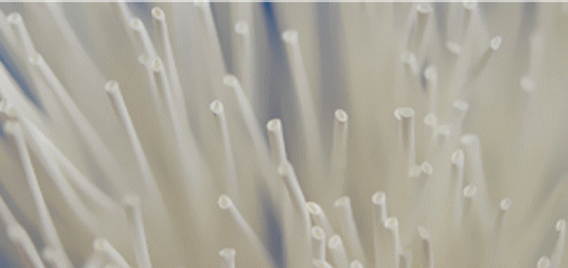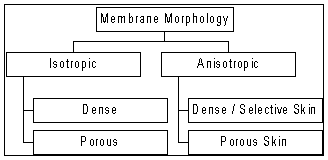Chemical and Process Engineering Resources

Membrane separation processes has become one of the emerging technology which undergo a rapid growth during the past few decades. It has drawn the world attention especially in the separation technology field, one of the chemical engineers' specialty with its distinguish performance compared to the conventional separation technology.
Historical Development of Membranes
Table 1 below indicates some of the historical development of the membrane technology before the "Golden Age" of membrane technology:
| Year | Development |
| 1748 | Abbe Nollet – water diffuses from dilute to concentrated solution |
| 1846 | The first synthetic (or semisynthetic) polymer studied by Schoenbein & |
| 1855 | Fick employed cellulose nitrate membrane in his classic study Ueber Diffusion. |
| 1866 | Fick, Traube, artificial membranes (nitrocellulose) |
| 1907 | Bechhold, pore size control, "ultrafiltration" |
| 1927 | Sartorius Company, membranes available commercially |
| 1945 | German scientists, methods for bacterial culturing |
| 1957 | USPH, officially accepts membrane procedure |
| 1958 | Sourirajan, first success in desalinating water |
The "Golden Age" of membrane technology (1960-1980) began in 1960 with the invention by Loeb and Sourirajan of the first asymmetric integrally skinned cellulose acetate RO membrane,. This development simulated both commercial and academic interest, first in desalination by reverse osmosis, and then in other membrane application and processes. During this period, significant progress was made in virtually every phase of membrane technology: applications, research tools, membrane formation processes, chemical and physical structures, configurations and packaging.
Basic Morphology
 |
| Figure 1: Membrane Morphology |
Two basic morphology of hollow fiber membrane are isotropic and anisotropic (Figure 1). Membrane separation is achieved by using of this morphologies. The anisotropic configuration is of special value. In the early 1960s, the development of anisotropic membranes exhibiting a dense, ultrathin skin on a porous structure provided a momentum to the progress of membrane separation technology. The semipermeability of the porous morphology is based essentially on the spatial cross-section of the permeating species, ie, small molecules exhibit a higher permeability rate through the fiber wall. While the anisotropic morphology of the dense membrane which exhibit the dense skin, is obtained through the solution-diffusion mechanism. The permeation species chemically interacts with thepolymer matrix and selectively dissolves in it, resulting in diffusive mass transport along the chemical potential gradient, as what demonstrated in the pervaporation process.

 FB
FB


1 Comments
Helo sir,
I am having a doubt...What is the difference between membrane seperation and adsorption process?